"Other than the laws of physics, rules have never really worked out for me." -Craig Ferguson
Earlier this week, evidence was presented measuring a very rare decay rate -- albeit not incredibly precisely -- which point towards the Standard Model being it as far as new particles accessible to colliders (such as the LHC) go. In other words, unless we get hit by a big physics surprise, the LHC will become renowned for having found the Higgs Boson and nothing else, meaning that there's no window into what lies beyond the Standard Model via traditional experimental particle physics.
But that by no means is the same thing as saying "the Standard Model is all there is." There are a large number of observations that tell us quite clearly that there's very likely more to the Universe than just the quarks, leptons, and bosons of the Standard Model. While experiments are telling us that low-energy supersymmetry and extra dimensions probably don't exist (and the LHC will either turn them up or even further constrain them towards the point of irrelevance), there are plenty of pieces of evidence that there is more to existence than these particles and their interactions.
What else is out there? Let's take a look at the Top 5 clues to physics beyond the Standard Model:
1.) Dark matter. From structure formation to colliding galaxy clusters, from gravitational lensing to Big Bang nucleosynthesis, from baryon acoustic oscillations to the pattern of anisotropies in the cosmic microwave background, it's clear that normal matter -- the stuff made out of standard model particles -- is only about 15% of the mass in the Universe. The rest of it simply doesn't have those strong or electromagnetic interactions, and neutrinos are of insufficient mass to account for more than about 1% of the missing stuff.
If dark matter is a particle -- and the way it appears to clump and cluster strongly suggests that it is -- it must be a particle beyond the standard model. Just what its properties turn out to be are currently an open question in physics, and though many candidates have emerged, none of them are particularly compelling.
2.) Massive neutrinos. According to the Standard Model, particles can either be massless -- like the photon and gluon -- or could have a mass determined by their coupling to the Higgs field. There's a range of what these couplings are, and so we get particles as light as the electron -- at just 0.05% of a GeV (where 0.938 GeV is the mass of a proton) -- and as heavy as the top quark, which tips the mass scales at around 170-175 GeV.
So during the last decade, when neutrino masses were constrained for the first time (via neutrino oscillations), it surprised many that they were found to be very low in mass, but to have definitively non-zero masses. Why is that? The general way of explaining this -- the see-saw mechanism -- typically involves additional, very heavy particles (like, maybe a billion or a trillion times more massive than the Standard Model particles) that are extensions to the standard model. Whether these particles exist or there's some other explanation, these massive neutrinos are almost definitely indicative of physics beyond the Standard Model.
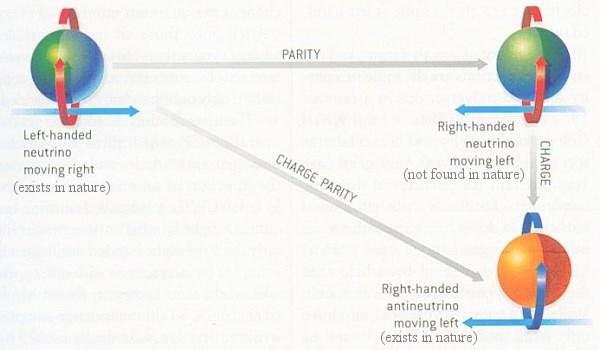
Image credit: Universe Review, from http://universe-review.ca/R02-14-CPviolation.htm.
3.) Strong CP problem. If you switched all the particles involved in an interaction with their antiparticles, you might expect the laws of physics to be the same: that's known as Charge Conjugation, or C-symmetry. If you reflected particles in a mirror, you'd probably expect the mirrored particles to behave the same way as their reflections: that's known as Parity, or P-violation. There are examples of where one of these symmetries is violated in nature, and in the Weak interactions (the ones mediated by the W-and-Z bosons), there's nothing forbidding C and P from being violated together.
In fact, this CP-violation does occur for the weak interactions (and has been measured in multiple experiments), and is very important for a number of theoretical reasons. Well, along the same vein, there's nothing in the Standard Model forbidding CP-violation from occurring in the strong interactions. But there isn't any observed, to less than 0.0000001% of the anticipated value!
Why not? Well, pretty much any physical explanation (as opposed to the non-explanation, "that's just the funny way it is") results in the existence of a new particle beyond the Standard Model, which may be a good candidate for solving problem #1: the dark matter problem!
4.) Quantum Gravity. The Standard Model makes no effort nor any claims to incorporate the gravitational force/interaction into it. But our current best theory of gravity -- General Relativity -- makes no sense at extremely large gravitational field or extremely small distances; the singularities it gives us are indicative of physics breaking down. In order to explain what goes on there, it will require a more complete, or quantum, theory of gravity.
We do not know how to make a working theory of quantum gravity. String theory is a possibility (and maybe the only viable game in town), but one thing all possibilities have in common is the existence of a new particle: a massless, spin-2 graviton. This may be the most elusive and the most fundamental of predictions beyond the Standard Model, and there's at least one (and possibly more) new particle out there if gravity can, in fact, be quantized.
5.) Baryogenesis. There's more matter than antimatter in the Universe, and while there's a lot we can say about why and how, we're not sure exactly what pathway the Universe took to wind up this way. There aren't necessarily any new particles that must exist to explain the matter-antimatter asymmetry, but of the four most common ways to produce it (GUT, Electroweak, Leptogenesis, and Affleck-Dine), only one (Electroweak baryogenesis) doesn't involve the existence of new, beyond-the-Standard-Model particles.
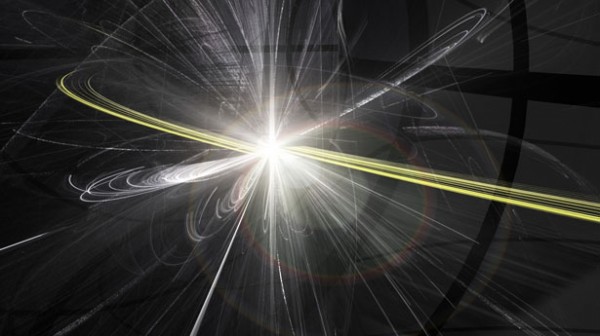
Image credit: http://www.shutterstock.com/.
There are also a whole slew of extra possibilities for new particles, including that there's one (or more) possibly associated with dark energy, there may be magnetic monopoles, grand unification, preons (smaller particles making up quarks and leptons), and the door is still open for particles from either extra dimensions or supersymmetry.
I'll leave you with two more things to consider.
The electron is a completely stable particle. While a free neutron will decay, a free proton is assumed to be completely stable. But it isn't necessarily completely stable. Through giant experiments involving astronomical numbers of atoms, we've determined that a proton's lifetime is greater than at least 1035 years, which is amazing.
But that's not infinite. If a proton does eventually decay, and have a half-life that is anything less than infinity, that means there are new particles beyond the Standard Model.
And one last thing...
Even if there's nothing beyond the Standard Model, one fun prediction is the existence of glueballs, or bound states of gluons. They ought to be found in upcoming particle collider experiments, although possibly not at the LHC. If they don't exist, or fail to show up where they ought to, that's a big problem for quantum chromodynamics, or the theory of the strong interactions that's part of the Standard Model.
Keep an eye out for this one: no glueballs = something else is wrong with the Standard Model!
So that's where we are right now, and even if there's no supersymmetry and no extra dimensions, we've still got a lot more to discover. Keep your eyes and ears open, and let's all keep looking together!

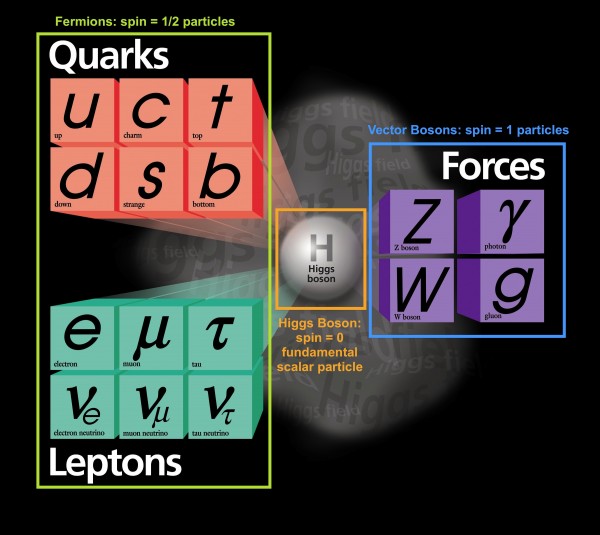
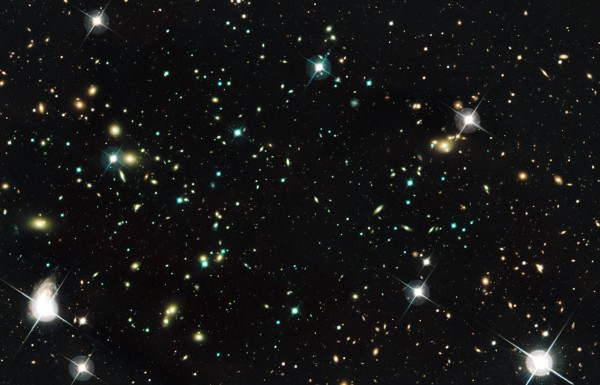
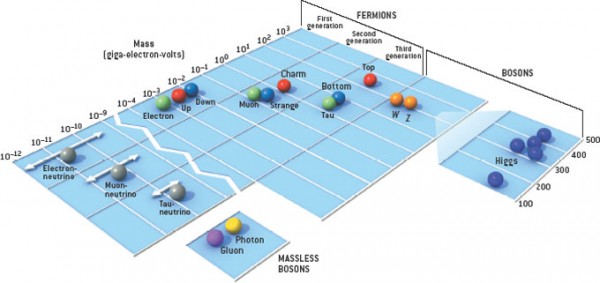
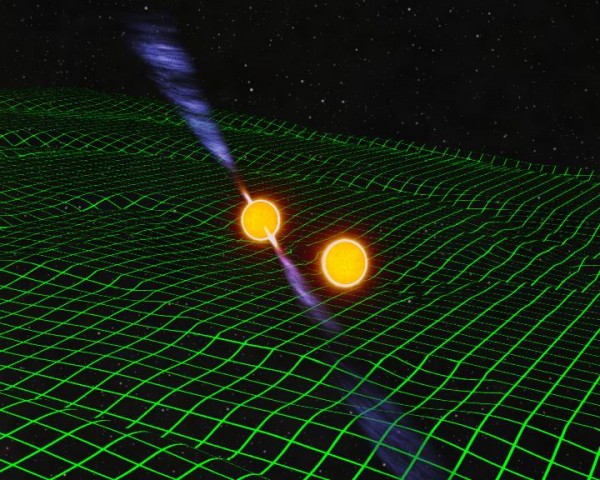
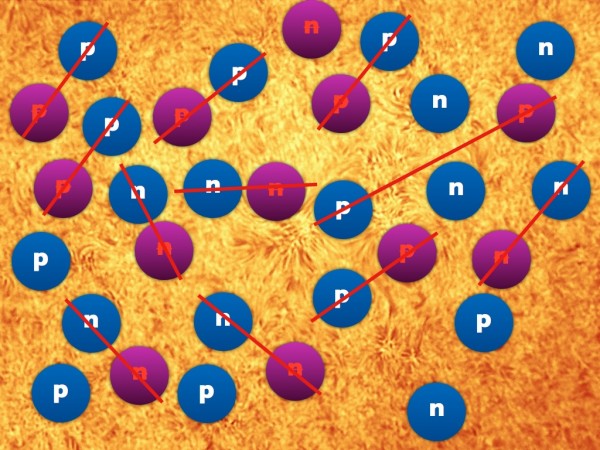
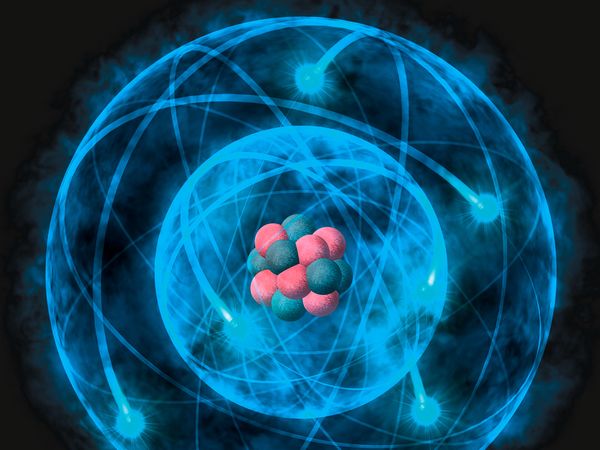
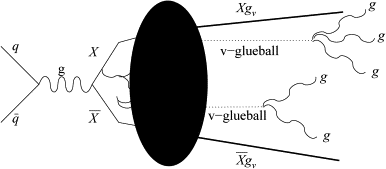
How viable a model of quantum gravity can string theory be if supersymmetry is constrained into irrelevance? Don't string theory models predict or require supersymmetry?
"But that’s not infinite. If a proton does eventually decay, and have a half-life that is anything less than infinity, that means there are new particles beyond the Standard Model.
"
Why? Why shouldn't it just decay into its constituent quarks?
Its funny how this blog entry completely destroys Ethan's previous blog entry, where he claimed there is no new physics beyond the standard model, nada, zip, zero. Does Ethan understand the irony and contradiction in all this?
I don't see contradiction here. What Ethan said was that we don't have access to equipment that can go past the standard model, because the energies required are beyond all our physics and there is no way to constrain let alone create the processes. Basically then, we have no idea how to go beyond the standard model. That is different from saying there is nothing beyond the standard model. This blog points to directions to go considering we ever find out how to go there. So we do know something about where to go just not really how to get there or even how to think about how to get there.
laconicsax,
The constraints that we place on SUSY are on the masses of the supersymmetric particles. You can always push masses in a theory up to arbitrarily high energies to cause them to couple less-and-less to the standard model particles. In the case of SUSY/string theory, you can push them all the way up to the Planck Scale, meaning you can construct a model where they exist, but are completely irrelevant for the physics of our Universe. In other words, it could be right, and have absolutely no impact on the physics of anything, ever.
davem,
For the same reason a grain of sand at the bottom of a pit won't spontaneously rise up and escape from it: a proton is a stable, bound state. Unless, that is, there's something new, like a sufficient source of external energy (in the sand's case) or a pathway that allows, say a proton to decay into a pion and an anti-lepton (such as a grand unified gauge boson). That's forbidden in the standard model, but allowed in many extensions to it.
Bob,
Reading comprehension is your friend. All of the physics beyond the standard model is not the same as non-SM physics evidence accessible at particle colliders.
In the previous post, Ethan stated in bold print "there is no need for any new physics beyond the standard model". This statement is simply in direct contradiction with the examples od dark matter, quantum gravity, etc, that are the subject if this post.
Facts please, not spin and bias.
regarding the graviton - is there any conceivable experiment that would detect it (meaning, detect quantization of gravity)? Thanks. Also, great recent series of blog posts about post-SM physics. Much appreciated, as always.
Yeah, lets attack this guy for helping us to expand our base of knowledge!! Grumble....grumble....grumble.....
Great Post, Ethan! Thank You!
Bob, there's no NEED for a ton of different things in the universe that are there nevertheless. Humans? Not needed - here anyway.
How well would glueballs fit the characteristics required for dark matter?
@david:
is there any conceivable experiment that would detect it (meaning, detect quantization of gravity)?
No, at least according to wikipedia:
Unambiguous detection of individual gravitons, though not prohibited by any fundamental law, is impossible with any physically reasonable detector. The reason is the extremely low cross section for the interaction of gravitons with matter. For example, a detector with the mass of Jupiter and 100% efficiency, placed in close orbit around a neutron star, would only be expected to observe one graviton every 10 years, even under the most favorable conditions. It would be impossible to discriminate these events from the background of neutrinos, since the dimensions of the required neutrino shield would ensure collapse into a black hole.
The simplest scenario possible could be supersymmetry at high energies, at worst outside the range LHC can probe indirectly.
The upshot is that it would give a dark matter candidate from simply having eternal inflation on a string background physics freeze out first a supersymmetric sector and then the standard model sector. (This is Douglas et all variant of eternal inflation.)
Much of physics would then just be “just the funny way it is” prediction* of anthropic theory, something that dark energy has hinted at since 1998. That would include the neutrino masses and baryogenesis. (I think, IIRC there are mechanisms of "bubbles" of matter respectively anti-matter proposed in inflation physics.)
Quantum gravity would then be string theory.
* The ability to make a testable prediction, as here, is of course the hallmark of a physical explanation.
I forgot to ask - isn't inflation also a "top clue" to new physics?
Since it should be a scalar field like the Higgs field, wouldn't inflation have particles as well? Do they become too diluted for us to observe, or is the field never excited enough to make any?
@ David
one way would be to engineer equipment that could gather precise data on processes that happen in the Universe which have huge energy - thus mass - thus gravity output. Such as black hole mergers. Of course, then you still have to find one, but still.
The other would be to "really" measure gravitational waves, and some other properties about them directly, if possible, from those you could infer gravitons properties.
But getting it in the accelerator is impossible for us.
Please forgive any ignorance here, but isn't gravity the effect of space changing shape when it encounters matter or energy? If so then the warped shape defines the path that matter/energy follows. If this description is accurate then space would seem to be the "container" that matter and energy flow through. Why then the need for a graviton?
If I'm off the rails, please reel me back in! ;)
Mark
You missed out the really important bit. Ethan preceded the bit in bold with "the results are in, and what they basically state is that ..."
So let's try to understand this, not spin it? One experiment, with a critical parameter measurement for constraining the Standard Model and its various alternate has come in and supports the basic Standard Model. Which makes no difference to all of the other experiments, facts and suppositions about the Standard Model.
It might mean that all of our current alternates to SM are wrong - in a way that the SM is not (if we accept that it is incomplete or a useful approximation - cf Principia versus General Relativity on gravity) because they are constrained away. Which means that reality is something we haven't thought of yet.
Very good summary Ethan.
I've have to read it carefully later.
Physics must wait.
Packing for a holiday week, family and friends.
Have a happy Thanksbiving.
Here's another speculation about a possible null result: what if LIGO II doesn't detect gravitational waves (quite possible), but LISA or its successors don't either?
@ScentOfViolets
we have indirect confirmation of grav. waves already. Not from LIGO or LISA, but from observing binary neutron starts. Orbital decay is consistent with grav. waves predictions. So in a way we know they are there, measuring them is another story.
You may take it as a given that I'm very aware of this ;-) Don't you see where this line of speculation goes?
@ScentOfViolets
not sure what you are aiming at. And to what speculation are you referring to? If you want to say something, say it. Don't sidestep around it.
Lotharloo
Wikipedia is great but it will never be the last word in physics.
Regarding the possibility of directly detecting a graviton, here is one possible way.
http://www.science20.com/quantum_diaries_survivor/cdf_discovers_graviton
(I don't think the graviton has been found this way yet; but it is a possibility way) And I expect theorist to think of other possible ways. (Note: I am not an expert and I defer to expert opinion on this matter)
Ethan. Very nice summary.
Nothing else to say.
Ditto.
I didn't think I was being particularly cryptic, but okay - suppose we see the sort of in-spiralling of gravitationally-bound partners that GR predicts as a consequence of gravitational waves, but that those waves are never predicted? What are the implications?
This is in the spirit of the implications of null results that annoyingly persist, despite ever larger amounts of money and effort being thrown at them.
er, substitute "detected" for "predicted".
One implication of no gravity waves is that the gravitational reaction is propogated at faster than the speed of light. That would mean that there isn't a graviton (at the very least in this case of cloe large objects). Gravity would have to be solely a reaction to spacetime curvature, inherent in the fabric of space.
@OKThen
mmm... sorry, but that article you linked from science 2.0 is from 1st of April... hint.. april's fool. It was a joke. All science articles there from 1st of April are just jokes.
@ScentOfViolets
" suppose we see the sort of in-spiralling...."
don't need to suppose anything. It's been done. Heck, people got a nobel prize for it some 20 years ago!
You're being deliberately obtuse, I see, since there's no way you could have missed the logical conjunction. I see no further need to treat you as if you're being sincere. That this is the best thing you can do with your time is . . . sad.
@ScentOfViolets
well sorry to not be able to indulge your crackpottery. My suggestion to you... and your spare time. Go read couple of books on astrophysics. Spend couple of months/years on studying different theories. Learn about gravity, and relativity. And then, come back here, and we'll talk.
You have the nerve to call me deliberately obtuse, yet it's clear from your writing that you have no clue about what you're talking about.
p.s. even if I follow your line of reasoning, it still changes nothing.
1. we have a theory of gravity that thus far matches ALL our observations. Is it complete. No. Does the Universe really work as GR describes it. We don't know. It's all an approximation, albeit very precise one. I mean, heck, we can launch spacecraft to other planets and land them within 2km of ideal coordinate.
2. indirect effects of gravitational waves detected. Does it mean they exist. As far as theory. Yes.
3. What would happen if LIGO and LISA never detect them. Nothing. We will use GR as long as it suits our needs and nothing better comes along.
So if I were to use you attitude and rudeness.. Your question is pointless. It's like asking: "well, what if we never invent a microscope that can see quarks?" Who cares. If the math fits observation, use it. If the observation's don't fit, change the math.
Violets, I note that you discarded the answer that WAS given to you so that you could go all snooty snotbrace on SL here.
That's rather proof that you weren't asking for an answer, but trolling for something to complain about.
Sinisa
Very funny.
I guess it's my day to be the fool.
But I wouldn't discount experimental physicists ingenuity.
Ha ha, fooled I am
I must add that the standard model is not complete for another reason.
We don't understand why the standard model of elementary particles has three generations of quarks and leptons. The universe works just fine with only one generation of quarks and electrons.
Scientist yabber all the time about "Occam's razor"; and at the heart of physics, the standard model has triple razor blades with no clear explanation of the benefit of triple blades. At least Gillette tells you why those two extra blades give you a smoother shave.
Is the universe just being silly by having two extra generations of quarks and leptons? Does the universe have a sense of humor? The universe only needs the 1st generation of quarks and leptons. How funny is that?
Some physicists get the universe's joke.
- “If I could remember the names off all these particles, I'd be a botanist.” Enrico Fermi
- "Who ordered that?" I. I. Rabi famously quipped; when the "mu meson" muon was recognized as just a "heavy electron" with an insignificant role in the universe.
If science was as popular as politics and religion; the comedians would be joking, the auudiences would be laughing and the bookmakers would make the odds of "preons" versus "4th generation" quarks and leptons.
Some physicists think the universe is very serious.
They expect a clear headed "Occam's explanation" involving some precise preon particle physics experiment at CERN's LHC, Fermilab or an astrophysics observation.
But The Jimmy Fineman (TJF) held a different opinion in his recent interview with Physics Entertainment Today (PET)
PET, "Is there any particle physics beyond the standard model?"
TJF , "That's a stupid question. The gods not only play dice; they have "love particles". Those 1st generation quarks and leptons may be legitimate, even royalty with pomp and glitze; but they got no substance. They'll show their privates in any tabloid's paparazzi experiment."
PET, "What are "love particles"?"
TJF, "The god's "love particles." Like the 2nd and 3rd generation quarks and leptons; they're illegitimate with no heir apparent purpose; but they got a lot of substance. They mostly keep their mouths shut in the tabloid experiments."
PET, "Any predictions you care to share?"
TJF, "Those prissy preon physicists got it all wrong; my odds favor the 4th generation quarks and leptons."
PET, "Why?"
TJF, "The 4th generation quarks and leptons will keep their mouths shut until a $10 billion experiment temps them to enter the game. They don't front page like royalty; and they got more substance and fundamental integrity than even the 2nd and 3rd generation quarks and leptons. And yes, I know the gods, so my odds favor a 4th generation of "love particles"."
PET, "So what exactly are you saying?"
TJF, "There won't be any "Occam's experiment" that explains 2nd and 3rd generation of quarks and leptons with prissy preon particles. No! When the CERN, Fermilab and/or astrophysics teams put up some real money; their experiments will find the 4th generation of quarks and leptons. I will be laughing with the gods and my odds all the way to the bank."
PET, "So there you have it fromThe Jimmy; no prissy preons; it's "love particles" all the way down, at least to a 4th generation."
"Preon research is motivated by the desire to explain already known facts (retrodiction), which include
-To reduce the large number of particles...
-To explain the three generations of fermions.
-To calculate parameters that are currently unexplained by the Standard Model
-To provide reasons for the very large differences in energy-masses observed in supposedly fundamental particles.
-To provide alternative explanations for the electro-weak symmetry breaking without invoking a Higgs field
-To account for neutrino oscillation and mass.
-To make new nontrivial predictions, for example, to provide possible cold dark matter candidates.
-To explain why there exists only the observed variety of particle species and not something else" wikipedia
"What can experimentalist do to prove or disprove the existence of prions?... We are looking for a fourth generation of quarks and leptons and for some evidence that the force-carrying particles also have generations--that the W and Z bosons, which mediate the weak nuclear force, have heavier cousins... physicists are forging ahead and blazing a trail into the quantum frontier." The Universe is a Complex and Intricate Place by Don Lincoln, Scientific American, Nov 2012 pg 38-43 http://www.scientificamerican.com/article.cfm?id=the-inner-life-of-quar…
Before there were quarks and QCD, there were hundreds of particles known to exist, and no clear way to categorize them or explain them. Your Enrico Fermi quote comes from this period. One could easily ask if this was a cosmic joke, because why did the universe need all these exotic and ephemeral particles?
However then we discovered a smaller, simpler set of particles that explained the abundance of particles previously known with smaller constituents. The answer to "why does the universe need them?" is then obvious: they must exist as a consequence of the behavior of quarks.
Then we discovered more of those types of particles, but nowhere near as many as we had before. The picture is still, relatively, much simpler conceptually, even if the math is more difficult.
Will we discover a more fundamental rule which changes the "joke" of 3 unexplained generations of quarks into an obvious consequence of their more base nature? Maybe. Maybe not.
Sometimes our view of the universe gets more complex. Sometimes it gets simpler.
Physicists often desire to seek out the simpler view, in part for aesthetic reasons but also for the rather compelling reason that nature has on multiple occasions obliged us in revealing simplicity where there once appeared complexity.
But at the end of the day the universe is what it is whether we like it or not. It's exactly as complex as it is. But lets not anthropomorphize nature on that basis as either "serious" or "silly". Nature hates that.
Its ironic that CB tells others not to anthropomorphize nature, but goes on to claim that there are things that nature is so passionate about, in fact there are things that nature "hates". wow....
I believe the internet goes "Whoosh" for you, Bob!
Why yes, that is ironic, thanks for noticing.
hundreds? are there really hundreds of different particles?
seems like dozens is a better magnitude.
Well yeah -- there's a lot of ways to combine 6 quarks (5 really since top quarks decay too fast) and their anti-particles with different spins to make hadrons, and new ones were popping out of particle accelerators like crazy in the 50s.
I don't know exactly how many have been found or are possible. Go here:
http://pdg.lbl.gov/2010/listings/contents_listings.html
And click on Mesons and Baryons (the two types of hadrons, which are things made from quarks) and then imagine you didn't have any set of rules for classifying or understanding why they exist.